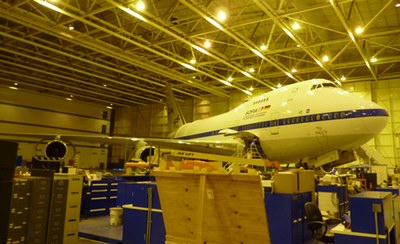Decelerating American Physics: Panel Advises Shutdown of Last U.S. Collider
The Relativistic Heavy Ion Collider is first in line for possible budget cutbacks

LAST SMASH? A computer rendering shows
the aftermath of a collision of gold ions inside the STAR detector at
the RHIC collider, now threatened by tightening budgets.
Image: BNL
At a meeting this week of the Nuclear Science Advisory Committee, which provides guidance to the U.S. Department of Energy and the National Science Foundation, physicist Robert Tribble of Texas A&M University in College Station unveiled the findings of an effort he led to identify priorities for an increasingly frugal U.S. nuclear science program. From the outset of the Tribble panel’s investigation, it appeared that one of three major projects would face elimination, and on January 28 Tribble announced that Brookhaven’s Relativistic Heavy-Ion Collider, or RHIC, had drawn the short straw.
More - Link >>> http://www.scientificamerican.com/article.cfm?id=tribble-panel-rhic-closure&WT.mc_id=SA_DD_20130131
Source: Scientific American Magazine.
Related Blog Post --
Historic Westinghouse Van de Graaff 'Atom Smasher' At Risk (2013 Jan. 30):
Link >>> http://spacewatchtower.blogspot.com/2013/01/historic-westinghouse-van-de-graaff.html
gaw
Glenn A. Walsh, Project Director,
Friends of the Zeiss < http://friendsofthezeiss.org >
Electronic Mail - < gawalsh@planetarium.cc >
About the Author: < http://buhlplanetarium.tripod.com/#GAW >
SPACE & SCIENCE NEWS, ASTRONOMICAL CALENDAR:
< http://buhlplanetarium.tripod.
Twitter: < http://twitter.com/
Facebook: < http://www.facebook.com/pages/
Blog: < http://spacewatchtower.
Author of History Web Sites on the Internet --
* Buhl Planetarium, Pittsburgh:
< http://www.planetarium.
* Adler Planetarium, Chicago:
< http://adlerplanetarium.
* Astronomer, Educator, Optician John A. Brashear:
< http://johnbrashear.tripod.com >
* Andrew Carnegie & Carnegie Libraries:
< http://www.andrewcarnegie.
* Civil War Museum of Andrew Carnegie Free Library:
< http://garespypost.tripod.com >
* Duquesne Incline cable-car railway, Pittsburgh:
< http://inclinedplane.tripod.
* Public Transit:
< http://andrewcarnegie2.tripod.














